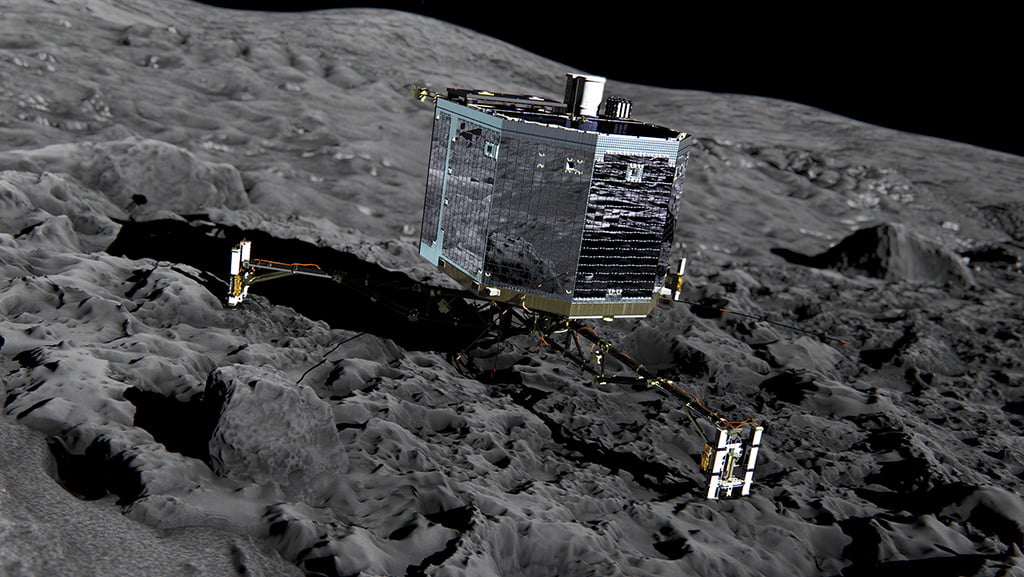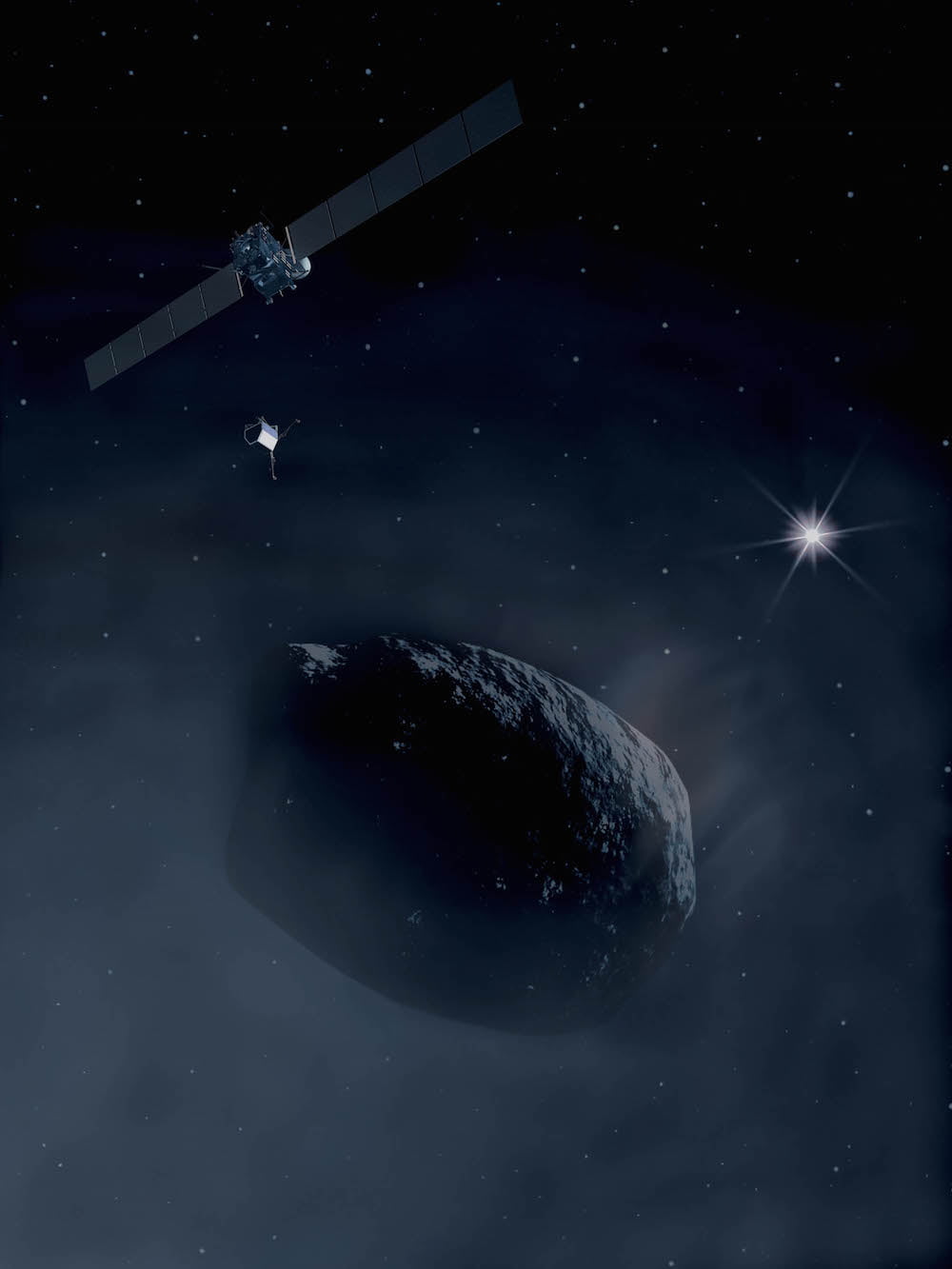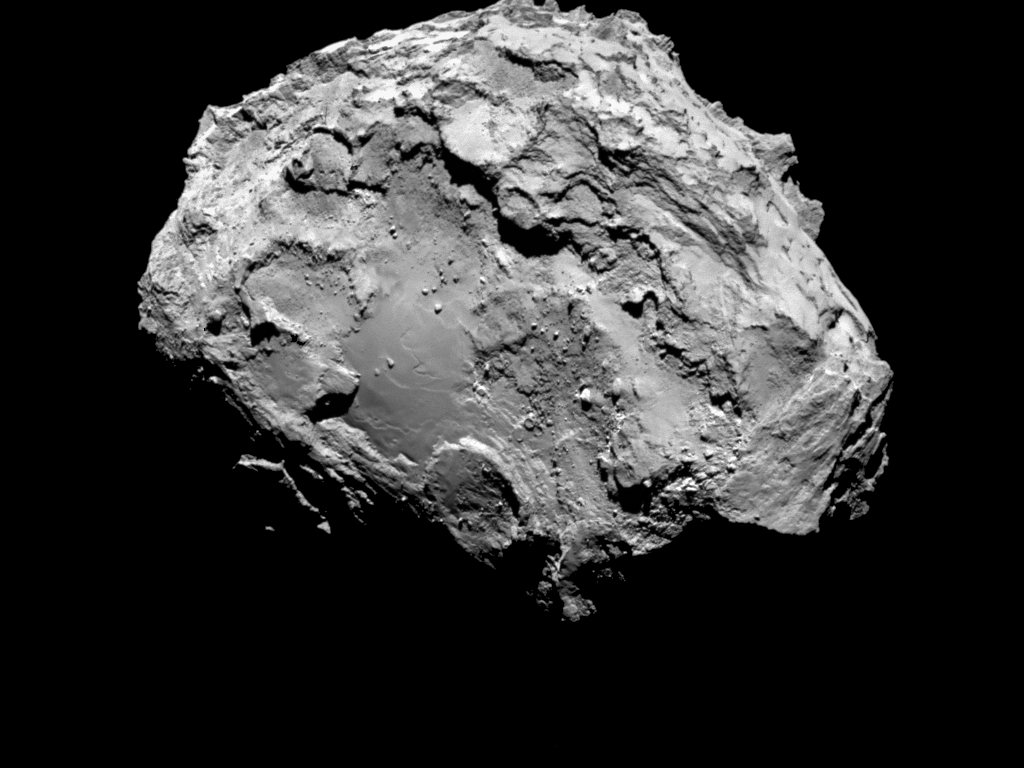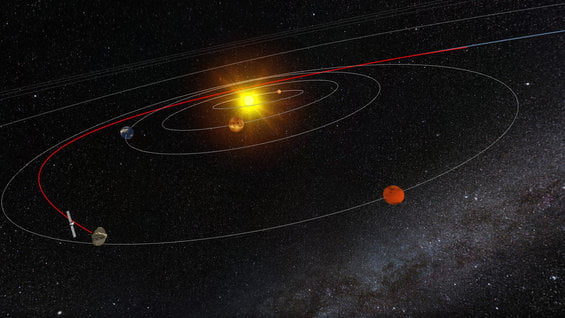Scientists made history today as the European Space Agency’s Rosetta satellite dropped lander Philae on a moving comet deep in outer space. After decades of research and preparation, scientists hope to find evidence that will reveal what sparked life on Earth. And despite Israel’s small size, the country’s scientific community wouldn’t miss out on the opportunity to contribute to an event that could literally change the course of history. Tel Aviv University Professor Akiva Bar-Nun told NoCamels how Israeli research into comets and their composition is aiding scientists in understanding this potentially groundbreaking accomplishment.
 The first comet landing in history
The first comet landing in history
At 6:03 PM Israel time, space aficionados around the world awaited news of the successful landing of lander Philae on the 67P Comet (Tz’riumov-Grsimnko) following a decade-long journey. The lander detached itself from Rosetta at approximately 10:00 AM and traveled 20 kilometers for about seven hours until it landed softly on the comet. Immediately following the landing, Philae will send a signal to Rosetta, which communicates with the scientists back on Earth to let them know that the landing was successful. Because the distance between Earth and the comet is over five hundred million kilometers, it took approximately 28 minutes for the signal to reach Earth.
SEE ALSO: SpaceIL’s Mission To The Moon Says It Chances Of Winning Google Lunar XPrize Are High
This isn’t the first time that scientists have tried to make contact with a comet. In January 2005, during alpha mission Deep Impact, a NASA Space probe successfully released an impactor, “the size of a washing machine” onto comet Tempel 1. Through this mission, scientists were able to gather a significant amount of information regarding the composition of comets and their possible contributions to life on this planet. Tel Aviv University significantly contributes to these findings, possessing the only machine in the world that can produce real samples of comet ice. By analyzing the measurements taken during Deep Impact and now by lander Philae, researchers hope that the Rosetta mission will be able to confirm their earth-shattering hypothesis.
35 years in the making, and finally they’ve found the right design
It was over a decade ago that the idea for the Rosetta mission was first conceived. A group of researchers came together from across the US and Europe on a mission to land the first probe on 67P Comet. “The original goal of the mission,” says Prof. Bar- Nun, “was not only to land on this comet, but also to dig into it, to take a sample, put it in a canister, and bring it back to Earth for close study.” The problem was that scientists were unaware of the mechanical strength of the ice, and after speaking with engineers, they realized that gathering a sample would prove difficult and that their design would have to change.
SEE ALSO: New Antibacterial Material Purifies Water In Space
 Often compared to a ‘dirty snowball’, a comet is an icy small body that releases gas or dust. Researchers posit that comets may have originally brought some of the water and organic materials to Earth that sparked complex life here millions of years ago. However, due to the vast distance and lack of knowledge regarding the constitution of comets, the team struggled to design a lander that could effectively collect and preserve the material in its journey back home. Thus, they came up with the idea that rather than physically bringing samples back to Earth, the lander would reach the comet, collect its measurements, and eventually relay the information back to Earth via Rosetta’s satellite.
Often compared to a ‘dirty snowball’, a comet is an icy small body that releases gas or dust. Researchers posit that comets may have originally brought some of the water and organic materials to Earth that sparked complex life here millions of years ago. However, due to the vast distance and lack of knowledge regarding the constitution of comets, the team struggled to design a lander that could effectively collect and preserve the material in its journey back home. Thus, they came up with the idea that rather than physically bringing samples back to Earth, the lander would reach the comet, collect its measurements, and eventually relay the information back to Earth via Rosetta’s satellite.
Sign up for our free weekly newsletter
SubscribeIt’s easy enough to say, but landing on a comet is no easy task. Prof Bar-Nun explains that because there are conditions of zero gravity, the lander won’t just sit on the surface. “The material of the comet is extremely fluffy, like snow that has just fallen on the Earth. This makes it very difficult for the lander to stay grounded,” he says. The comet also contains some very uneven terrain, steep cliffs, and huge boulders. After actively testing many different models and landing mechanisms, researchers are hopeful that this time the landing will yield success. Philae will slowly drop to the surface of the comet and will be anchored down by two harpoons that will fire into the ice.
The search for amino acids – the stuff of life
Once Philae is able to collect enough information, scientists hope to answers to one of the most baffling questions of all time—why does Earth posses complex life? To this goal, understanding the chemical composition of the comet will be of the utmost importance.
“These materials interest us because we know that comets delivered to the early Earth, after its formation, contained about a third of the water and a lot of the organic material which eventually dissolved in the ocean and set the scene for life to emerge on Earth. These organic materials were essential for the emergence of life and we would like to know what they are,” says Prof. Bar-Nun.
In particular, scientists will be especially delighted if that are able to find “left handed” amino acids in the chemical makeup of the comet. These organic molecules form the basis of life on Earth and interestingly enough, all of the plant and animal proteins on Earth are derived from left-handed amino acids. Finding them on a comet could explain the existence of complex life on Earth and potentially suggest that similar life could exist on other planets.
Tonight, as over a decade of hard work and diligent research has reached its climax, the project’s scientists anticipate that Philae’s rendezvous with 67P Comet will reveal the secret to Earth’s complex lifeforms.
Photo: ESA
Related posts

Resilient And Nutritious New Plant-Based Milk Aims To Make A Splash

Chocolate From Cultivated Cocoa Comes Without Environmental Toll

Plastic Fantastic: Startup Takes PVC Back To Its Crude Oil Roots






Facebook comments